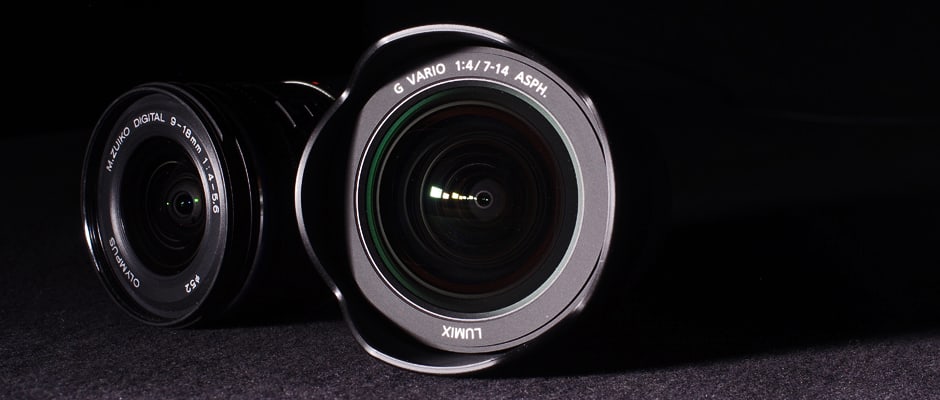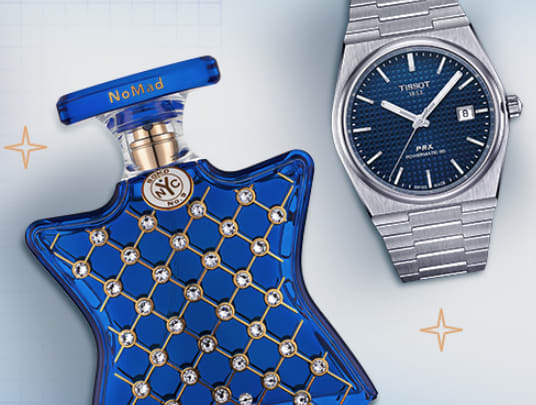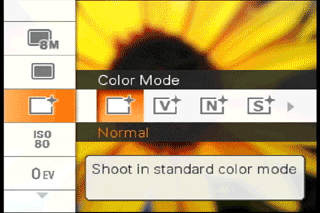Head to Head: Olympus 9-18mm f/4-5.6 vs. Panasonic 7-14mm f/4
Want to go wide on Micro Four Thirds? Olympus and Panasonic have your back.
 Credit:
Credit:
Products are chosen independently by our editors. Purchases made through our links may earn us a commission.
Compared to users of other mirrorless systems, Micro Four Thirds shooters are spoiled for choice when it comes to lenses. The official Micro Four Thirds lens chart currently lists 38 different models, which is a beefy number even by some DSLR system standards.
Though designing wide-angle lenses becomes exponentially more difficult the smaller a camera's sensor gets, Micro Four Thirds nevertheless has two very compelling super-wide zoom options, plus a couple fast wide-angle primes.
The most prominent of these options are the Panasonic 7-14mm f/4 and Olympus 9-18mm f/4-5.6. Though broadly similar in intent, these two have significant differences in equivalent focal length, physical design, and price, and will likely appeal to distinct types of buyers. Nevertheless, we've pitted them against each other in a quick field test.
Handling & Design
Both of these lenses fit very neatly into the aesthetic guidelines of their companies' consumer lens lines. As usual, the Olympus lens features a weird mishmash of silver and black, with alternating smooth and ribbed areas of hard plastic on the zoom ring. The Panasonic, on the other hand, has grippy, rubberized rings for both focus and zoom, and a grey-on-black look. The zoom ring on the Panasonic 7-14 has a bit more resistance than the 9-18, but both are very satisfying to use. When it comes to focusing rings, though, the 7-14mm is the clear winner.
The Panasonic lens is bigger and heavier than the Olympus (300g vs.155g), largely due to its constant f/4 aperture. The front element is large and bulbous, compared to the small, flat front of the 9-18mm lens. This design choice creates distracting purple flare when shooting with the sun or any other bright light source anywhere in or near the frame, despite the built-in petal lens hood. The Olympus 9-18mm, in contrast, doesn't include a hood but shows impressive flare resistance in the field.
One thing to note about the Olympus lens is that it's a collapsible design. When stowed for travel, it retracts to roughly half its in-use length, or a little more than half the length of the Panasonic 7-14mm. It's great that the lens is more portable than the competition, but more than once we turned the camera on, ready to shoot, and were greeted with an annoying "The lens is locked" message. A final quirk is that the Panasonic lens zooms in by turning the ring right to left, while the Olympus goes in the opposite direction. It's a minor annoyance, and something that Micro Four Thirds users have been putting up with for years now.
Image Quality Comparison: Still Life
Below are crops from these two lenses and the Olympus 12mm f/2 prime. All shots were taken at 12mm on a tripod, at f/5.6 (the widest aperture possible on all three lenses), using the Olympus OM-D. We’ve taken 100% crops from the center, corner, and edges of the frame to compare relative sharpness and chromatic aberrations.

It’s not an exaggeration to say that all three of these lenses are extremely sharp, particularly in the center. The resolution of the 9-18mm falls off a little more toward the extreme edges and corners, but even there it’s a very strong performer. Somewhat surprisingly, the Panasonic 7-14mm shows more CA toward the midway point and edge of the frame, but it's sharper at the edges and corners than either Olympus lens.
It's worth noting that the best aperture for optimum sharpness with most Micro Four Thirds lenses is around f/4. Since both of these lenses start there, they only suffer in terms of resolution from stopping down. Of course, to get the ideal depth of field for landscape shots you might need to do so anyway, so the good news is that while there's a dropoff in sharpness, it's remarkably gentle.
Image Quality Comparison: Field Shooting
In general, both lenses are very enjoyable to work with in the field. The Panasonic's wider minimum focal length and slightly sharper output at the extreme edges of the frame makes it the clear choice for architectural photographers, but the Olympus will be plenty wide and plenty sharp for most casual shooters. On the long end, the Olympus's 36mm-equivalent reach was occasionally useful (compared to the 28mm max of the Panasonic), but at f/5.6 it's fairly limited in use.

If you want a quality one, you can't go wrong.
The Panasonic 7-14mm's flare problem is pretty severe, thanks to its bulbous glass front element. Due to the way it's designed, it catches light from sources that aren't even in the frame, leaving ugly purple and green flare streaking across your subject. Occasionally flare can add a fun look to a shot, but with this lens you're likely to get that effect more often than you'd like. With its flat front element, the Olympus lens shows impressive flare resistance. We didn't observe any notable flare in the field, though when playing with our studio lights we did succeed in producing some bright purple flare when our bright lab lights were just outside the frame.

If you want bokeh, a wide-angle zoom probably isn't the lens you should be buying. Both of these lenses open up to f/4 at their wide ends, but neither can manage much in the way of background blur. Even when shooting a close-up subject against a distant background, what bokeh there is looks jittery and generally not very attractive.
Vignetting occurs throughout the 7-14mm lens's zoom range when shot wide open. Usually Micro Four Thirds bodies correct for vignetting (along with distortion and in some cases CA) in the JPEG conversion process, but it appears that the falloff this lens produces is too extreme to be fully corrected in software. The effect is certainly noticeable in any shot where there is a solid-colored background, which will be just about any shot taken outdoors at 7mm. In contrast, the Olympus 9-18mm shows just a little vignetting wide open, and it goes away quickly as you stop down.

Conclusion
Doing the math in this comparison isn't terribly difficult. If you need 7mm on a Micro Four Thirds body, the Panasonic 17-14mm f/4 is the only way to get there—end of story. The good news is, it's also a fantastic lens in virtually every respect. Thanks to in-camera JPEG correction, distortions are kept to a bare minimum, making it a great choice for architectural photographers. Sharpness is fantastic across the frame, outdoing both the Olympus 9-18mm and the $899 Olympus 12mm f/2 prime. Persistent flare is really the lens's only notable problem. While its $1,000 street price might seem steep, it's still a great performance value, comparing well to even Nikon's legendary $2,000 14-24mm f/2.8 full-frame zoom.
If you don't need those extra 2mm (equivalent to 4mm in full-frame terms) on the wide end, the Olympus 9-18mm is a value lens par excellence. It currently sells for $599 at reputable online merchants—that's nearly half the price of the Panasonic for the bulk of its performance capabilities. Sure, it's a little less sharp at the extreme edges of the frame, it suffers from a variable aperture, and it doesn't include a hood. But on the other hand, it doesn't flare excessively, it's small and light, and it handles wonderfully.
Really, you can't go wrong with either of these lenses; just be sure to assess your needs before plunking down the cash.
Panasonic 7-14mm Samples
{{photo_gallery "7-14"}}
Olympus 9-18mm Samples
{{photo_gallery "9-18"}}
